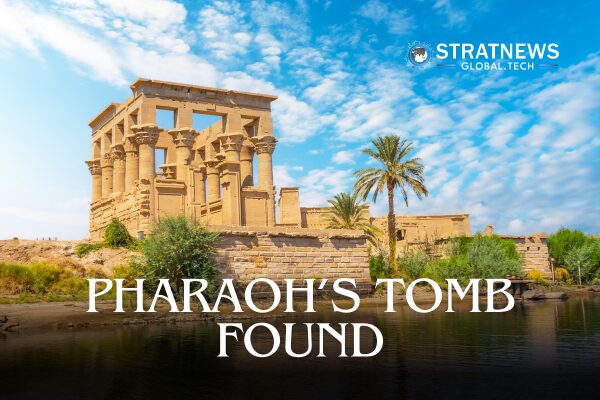Tomb of Unknown Pharaoh Unearthed Near Abydos
Archaeologists have uncovered the tomb of unknown pharaoh, an Egyptian king, believed to date back around 3,600 years. The limestone burial chamber, found near the city of Abydos, marks a significant discovery from a time of political chaos in ancient Egypt’s history.
Discovery Made in the Anubis Mountain Necropolis
The burial chamber lies seven metres underground at Anubis Mountain, an ancient necropolis in Upper Egypt. It was discovered by a joint team from the University of Pennsylvania Museum and Egyptian archaeologists. This is the second royal tomb announced this year, further enriching understanding of Egypt’s Second Intermediate Period.
Though the tomb had been looted in antiquity and found bare, it once held the remains of a pharaoh whose name was inscribed in hieroglyphs on plastered brickwork near the entrance. Sadly, the name has been lost due to ancient vandalism. Painted scenes of the goddesses Isis and Nephthys flanked the chamber’s entryway.
Clues Point to the Abydos Dynasty
Egyptology professor Josef Wegner, a lead archaeologist on the project, suggested the tomb might belong to a ruler from the Abydos Dynasty—a line of kings that governed a portion of Upper Egypt during a fragmented era. He mentioned kings Senaiib and Paentjeni as possible candidates, as both are known from monuments in Abydos but lack identified tombs.
The newly discovered structure features several rooms with five-metre-high vaulted mudbrick ceilings. It is built within the tomb complex of the earlier pharaoh Neferhotep I and is believed to be the earliest and largest of the Abydos Dynasty tombs.
Political Fragmentation and Historical Context
The tomb dates to Egypt’s Second Intermediate Period, which spanned from 1640 BC to 1540 BC. This was a time of political fragmentation, where as many as four rival kingdoms—including the Hyksos in the Nile Delta—vied for power. Eventually, the era gave rise to the powerful New Kingdom.
According to Wegner, “Egypt was fragmented with as many as four rival kingdoms. The Abydos Dynasty was one of these.” The discovery raises fresh questions about how Egypt transitioned from division to unity, involving major social, political, and technological shifts.
Ongoing Excavation and Future Discoveries
Wegner’s team previously discovered the tomb of another Abydos Dynasty ruler, Seneb-Kay, in 2014. The newly unearthed tomb is believed to predate that of Seneb-Kay, suggesting the potential for more royal tombs in the vicinity.
Excavations continue, promising deeper insights into this lesser-known period of Egypt’s ancient past. The site adds to Egypt’s growing record of archaeological finds, which include the recent identification of New Kingdom pharaoh Thutmose II’s tomb near Luxor.
with inputs from Reuters


